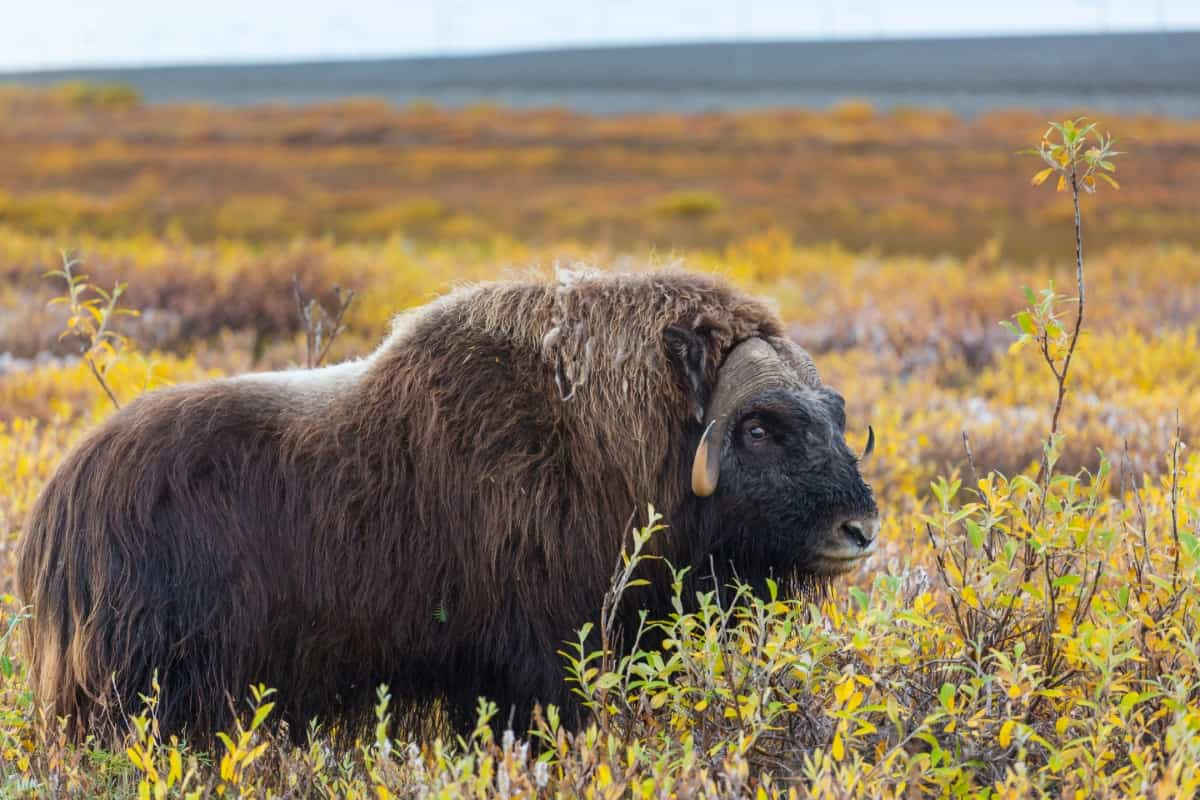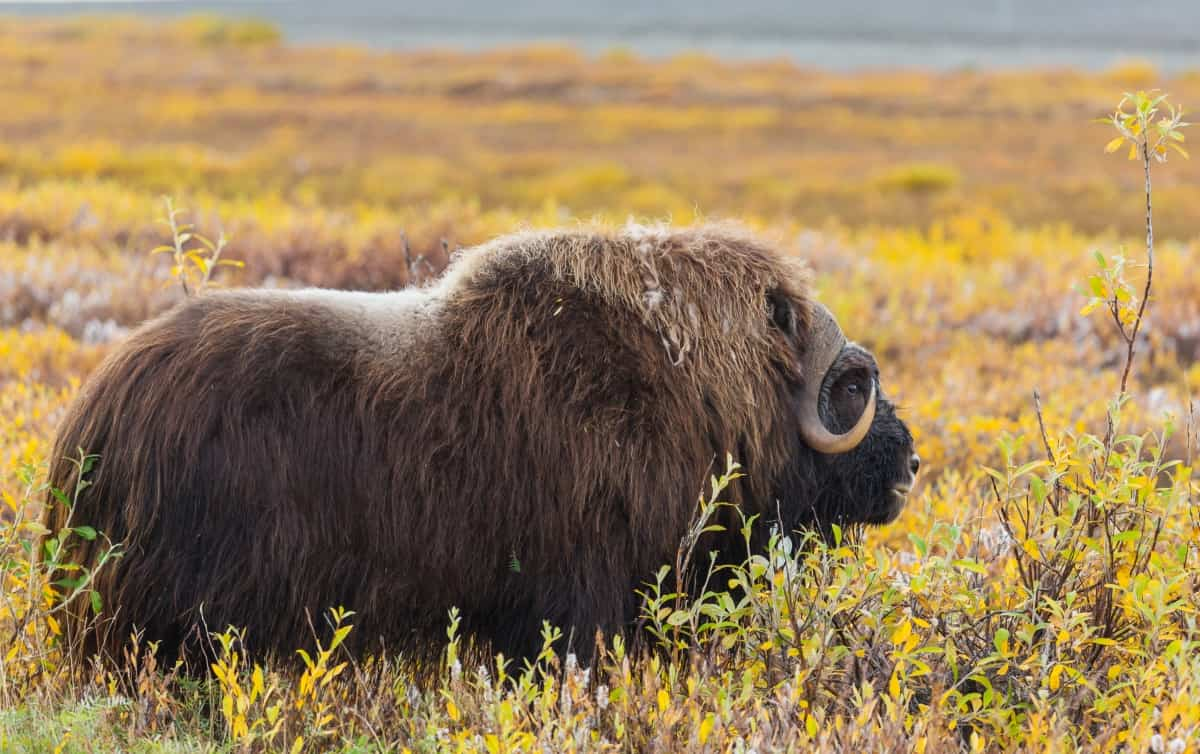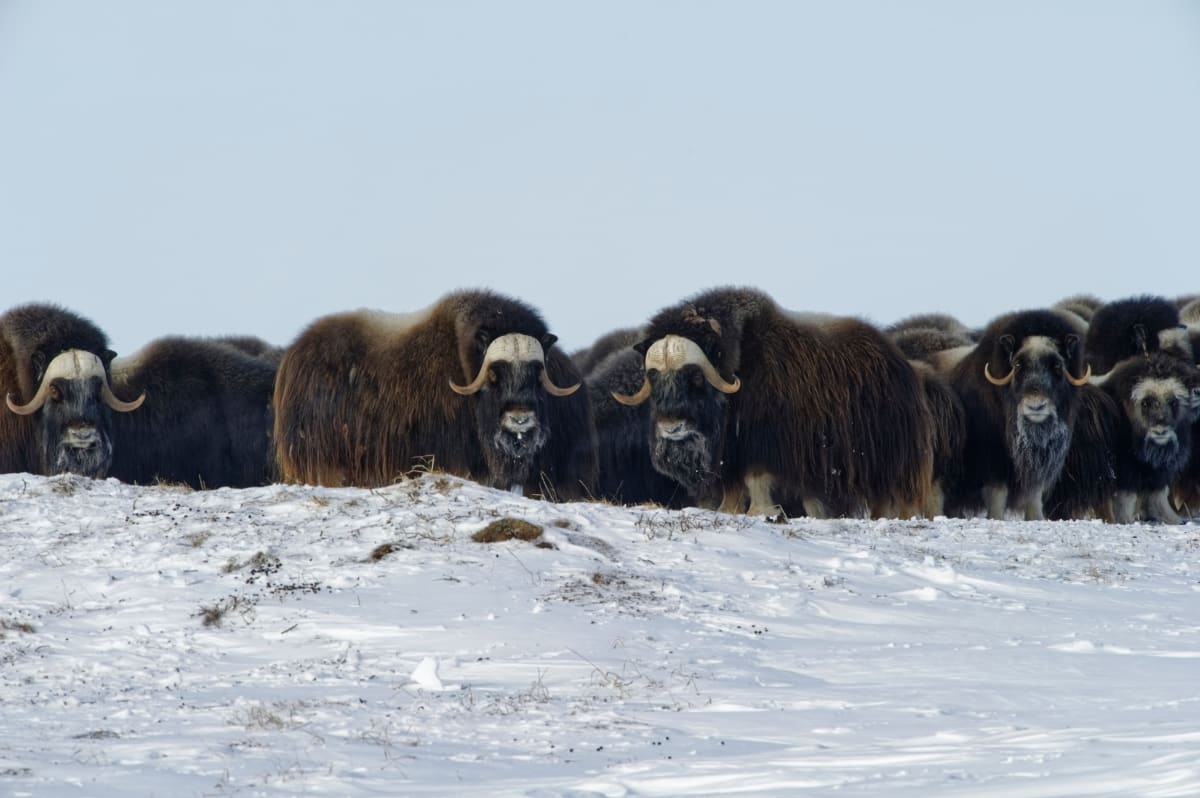The Muskox, also spelled Musk ox and Muskox, plural Muskoxen or Musk oxen, is a hoofed mammal of the family Bovidae. For starters, Musk oxen play a crucial role in maintaining the delicate balance of Arctic ecosystems. Their unique physical characteristics and social behaviors offer researchers a wealth of information on how species thrive in harsh environments like the Arctic tundra.

Overview of Musk Ox
Evolutionary Significance
The Musk ox, also known as Ovibos moschatus, holds a special place in the Arctic ecosystem with its unique evolutionary history. Originating from the Pleistocene era, these majestic creatures have adapted remarkably to survive in harsh climates.
Their unique adaptations to harsh environments make them resilient animals that can thrive in extreme conditions, offering valuable insights into evolutionary biology and climate change resilience. Additionally, raising Musk Ox can provide opportunities for sustainable livelihoods for local communities through eco-tourism and cultural preservation efforts.
Physical Characteristics
Size, Weight, Appearance, and Adaptations
The Musk ox, with its thick coat of fur and robust build, is a majestic creature roaming the Arctic tundra. Mature males, known as bulls, stand at around 4 to 5 feet in height at the shoulder and can weigh between 500 to 800 pounds. On the other hand, females called cows are slightly smaller, averaging about 4 feet in height and weighing between 400 to 500 pounds.
These magnificent animals have evolved impressive adaptations to survive harsh Arctic conditions. Their long, shaggy hair provides excellent insulation against freezing temperatures, while their sturdy hooves help them navigate through deep snow effortlessly. Additionally, Musk oxen possess a distinct Musky odor emitted during mating season as a way to attract potential mates.
Behavioral Traits
Social Structure and Herding Behavior
Musk oxen are known for their unique social structure and herding behavior, which play a main role in their existence in the harsh Arctic environment. The herd follows her lead when it comes to finding food sources and protecting each other from predators. Within the herd, there is a hierarchy based on age and size, with younger members often staying close to the center for protection.
Musk oxen also exhibit strong family bonds, with mothers fiercely protecting their calves against any threats that may arise. Herding behavior serves as a defense mechanism against predators like wolves and bears. When threatened, Musk oxen will form a defensive circle around calves and weaker individuals, presenting an intimidating front of sharp horns and massive bodies.
Habitat and Distribution
Arctic Tundra and Geographic Range
The Musk ox, with its shaggy coat and sturdy build, thrives in the harsh conditions of the Arctic tundra. This vast expanse of frozen land provides the perfect habitat for these resilient creatures to roam freely. From Alaska to Greenland, Muskoxen can be found across a wide geographic range within the Arctic Circle.
In case you missed it: Zebu Cow Breed: Origin, Characteristics, Price, Life Span, Appearance, and Temperament

Their ability to live in such extreme environments is a testament to their remarkable adaptations. With thick fur and layers of fat, they are well-equipped to withstand the frigid temperatures and strong winds that characterize the tundra landscape. Muskoxen graze on grasses, sedges, willows, and other vegetation that manage to grow in this unforgiving terrain.
Diet and Foraging Habits
Adaptations to Arctic Feeding
The diet of the Musk ox is as unique as its Arctic habitat. These creatures have adapted to survive in harsh conditions by feeding on a variety of vegetation, including grasses, sedges, willows, and lichens. Musk Ox’s digestive system allows them to extract nutrients from tough and fibrous plant material found in the tundra.
During winter, when snow covers much of their food source, Musk oxen use their strong hooves to dig through the snow to reach buried plants. This behavior showcases their resilience and resourcefulness in finding sustenance even in challenging circumstances. Musk oxen are known for forming large herds while foraging, providing protection against predators like wolves and bears. This social behavior not only ensures safety but also facilitates efficient grazing practices within their group.
Reproduction and Life Cycle
Breeding Season and Calf Development
Musk oxen have a unique reproductive cycle that revolves around the breeding season and calf development. During the rutting season in late summer, dominant bulls compete for mating rights with females by engaging in head-butting contests to establish dominance. This intense period showcases their strength and resilience.
Once successful mating occurs, female Musk oxen undergo a gestation period of about 8 months before giving birth to a single calf in spring. The calves are born precocial, able to stand and follow their mothers shortly after birth. They rely on maternal care and protection within the herd to survive the harsh Arctic conditions.
Calf development is crucial for their survival as they learn essential skills from their mothers, such as foraging techniques and social behaviors within the herd. As they grow, young Musk oxen gradually become more independent while still benefiting from the guidance of older members of the group. The life cycle of Musk oxen highlights nature’s remarkable ability to adapt to challenging environments through successful reproduction and nurturing offspring for future generations.
Predators and Survival Strategies
Natural Predators and Defense Mechanisms
Musk oxen are equipped with robust defense mechanisms to survive in their harsh Arctic environment. Natural predators such as wolves and bears pose a threat to these majestic creatures, but Musk oxen have evolved unique strategies for protection. When faced with danger, Musk oxen form a defensive circle around the vulnerable members of their herd, presenting a united front against potential threats.
Their thick, woolly coats act as insulation against both the freezing temperatures and predator attacks. The sharp horns on their heads serve as formidable weapons, capable of inflicting serious harm on any would-be attackers. Through collective vigilance and coordinated responses, Musk oxen showcase their resilience in the face of adversity.
Conservation Status
Threats and Conservation Efforts
The Musk ox faces several threats to its conservation status in the wild. Climate change is a significant concern, impacting their habitat and food sources. Human activities such as hunting and destruction also pose a risk to these majestic creatures. Conservation efforts are crucial in safeguarding the future of the Musk ox population. Various organizations work tirelessly to protect their habitats, enforce hunting regulations, and raise awareness about the importance of preserving this species.
In case you missed it: Zwartbles Sheep: Raising Facts, Profile, Characteristics, Uses, and Care

Collaborative research projects aim to understand Musk ox behavior, migration patterns, and overall health. By studying these aspects, conservationists can develop effective strategies for ensuring the long-term survival of these resilient animals.
Cultural and Economic Importance
Historical Significance and Modern Uses
The Musk ox holds a significant place in various cultures around the world, with indigenous communities revering to them for their resilience and spiritual symbolism. Historically, these majestic creatures have been depicted in art, folklore, and traditional ceremonies as symbols of strength and survival in harsh environments. In modern times, Musk ox wool has gained popularity for its exceptional warmth and softness, making it a sought-after material for high-quality winter garments.
Additionally, Musk oxen are sometimes raised for eco-tourism purposes, offering unique experiences to travelers seeking encounters with these fascinating animals in their natural habitats. Furthermore, the economic value of Musk ox products contributes to local economies in regions where they are found. By promoting sustainable practices and conservation efforts, communities can benefit from both the cultural significance and economic opportunities presented by these magnificent beasts.
In case you missed it: How to Start Holstein Friesian Cow Farming in 10 Steps

Conclusion
The importance of the Musk Ox goes beyond its impressive size and appearance. These creatures play a vital role in the Arctic ecosystem, shaping the dynamics of their habitat. Raising Musk Ox comes with a multitude of benefits that go beyond just their wool and meat. These play a vital role in the ecosystem, contributing to maintaining the balance of Arctic tundra ecosystems.
- Feed Your Flock for Less: Top 10 Tips to Save on Chicken Feed
- Ultimate Guide to Ossabaw Island Hog: Breeding, Raising, Diet, and Care
- Hatching Answers: The Top 10 Reasons Your Chickens Aren’t Laying Eggs
- Eggs and Economics: Breaking Down the Cost of Raising Backyard Chickens
- Defend Your Greens: Proven Methods to Keep Iguanas Out of Your Garden
- Ultimate Guide to Cinnamon Queen Chicken: A Comprehensive Guide for Beginners
- Ultimate Guide to California Tan Chicken: Breeding, Raising, Diet, Egg-Production and Care
- Ultimate Guide to Marsh Daisy Chicken: Breeding, Raising, Diet, and Care
- 10 Types of Chicken Farming Businesses You Can Start for Profits